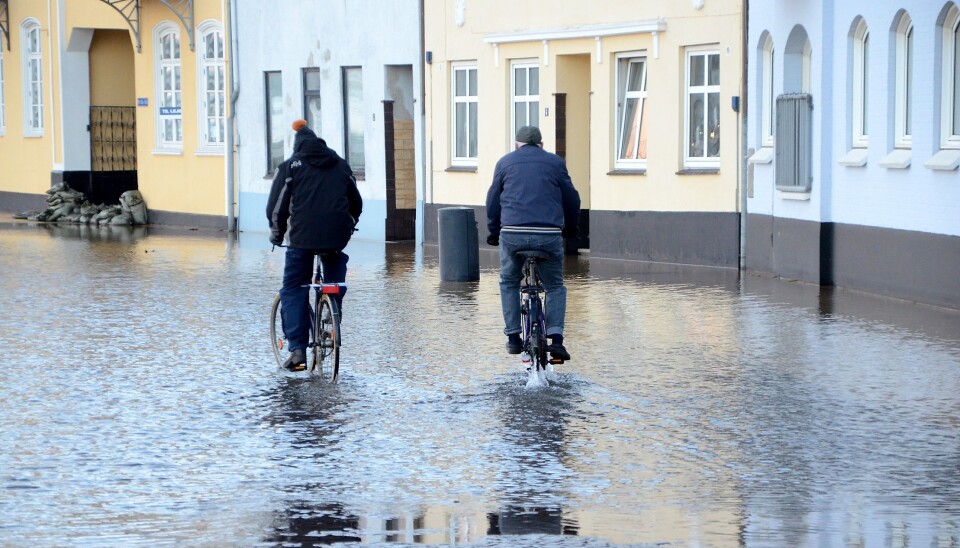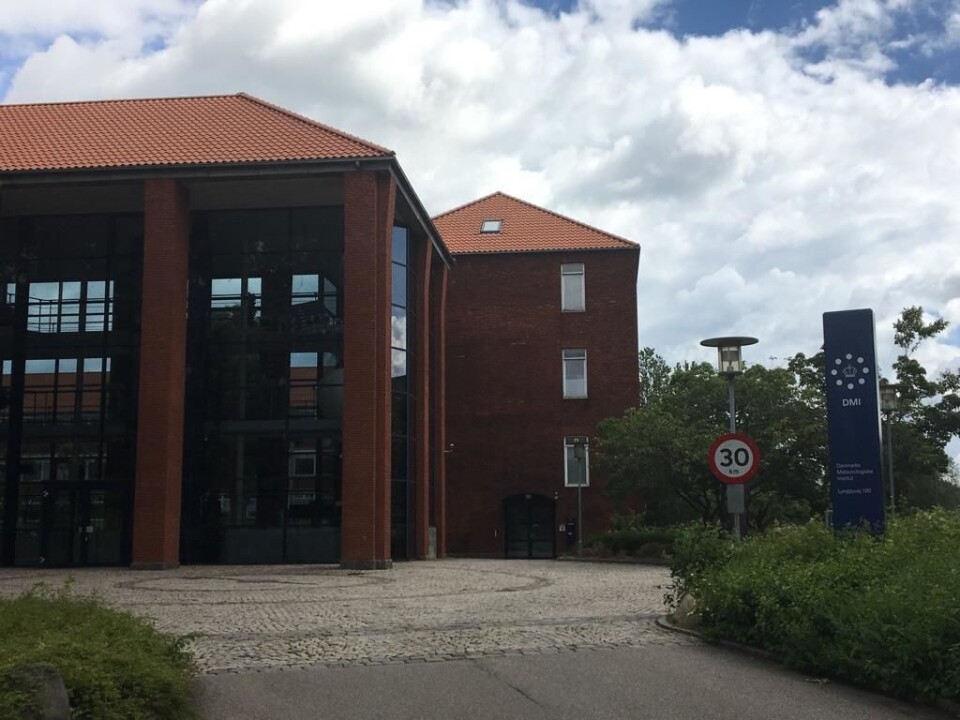
Danish Meteorological Institute has lost one third of its staff in four years
Nearly 100 jobs in forecasting, research, and communications have been cut at DMI since 2013. We should be worried, says former DMI scientist.
Proposed cuts to U.S. government scientific agencies like the EPA and NOAA have recently made headlines around the world—but is Denmark really doing any better?
Not according to renowned Danish climate scientist, Professor Jens Hesselbjerg Christensen from the University of Copenhagen, Denmark, who was the head of science at DMI from 2006 to 2014 and the lead scientist on climate research until 2017.
“Over the last four years, approximately one third of staff was laid off. Nobody paid attention to it in Denmark. This seriously impacted DMI’s ability to operate services and science has been really badly hit,” says Christensen, who left DMI in March this year to take up a professorship at the University of Copenhagen.
He remains closely affiliated with DMI and collaborates on a number of projects with DMI scientists.

Christensen attributes these cuts to a long term reduction in funding of public institutions in Denmark, which have left organisations like DMI increasingly reliant on income from commercial contracts and vulnerable to severe budget short falls if these contracts are not renewed.
DMI management have confirmed the approximate number of staff cut, but declined to comment further.
Concerned colleagues in Denmark
Christensen’s concerns are echoed by colleagues outside of DMI.
“DMI is a big player in Denmark in climate modelling. I worry about what the implications are for these cuts,” says climate scientist Marit-Solveig Seidenkrantz from Aarhus University, Denmark.
“Of course DMI has an important public service role for weather forecasting and shipping, but it’s also important for science in Denmark. They do a lot of climate modelling analyses that only DMI have the facilities or the manpower to do. And they’re heavily involved in advancing the large European climate modelling communities,” she says.
“I know colleagues who’ve been laid off. It’s bad,” says climate modeller Peter Ditlevsen from Niels Bohr Institute at the University of Copenhagen. Ditlevsen was employed at DMI for one year in the early 1990s as a postdoc researcher.
“People are nervous about their positions. Denmark is a small country and few institutions do this kind of research. We don’t have openings here at the University of Copenhagen, for example. So people either leave the field or do something else. That’s something you can do in your 30s but it gets harder once you get older, and a lot of people are reluctant to move abroad,” he says.
DMI scientists “working as hard as we can”
Meanwhile the remaining staff at DMI, both forecasters and researchers, are working hard to keep things going through what DMI climate scientist Ruth Mottram describes as a “very difficult” and “demoralising” time.”
“DMI’s lucky that they have a motivated workforce and we’re all working as hard as we can to keep things going,” says Mottram.
“We’ve built a very successful institution that does a good job at forecasting but the pressure on budgets continues. We’re OK now, but who knows where we’ll be next year,” she says.
Mottram emphasised that her comments to ScienceNordic represent her personal opinions and not those of DMI.
Weather forecasts will not suffer in the short term
An obvious question is what effect staff cuts will have on the quality of weather forecasts produced by a downsized DMI. But Mottram does not think that this is something that we need to worry about.
“The cuts are probably not going to affect the weather forecast today,” she says, and emphasises that her colleagues at DMI are working hard to try and ensure that weather forecast quality and early warning systems are not affected.
But the cuts may have ramifications in the years to come.
“We have a lot of momentum. We’ve built up a successful system, a lot of which is automated. So far, we’ve been able to keep it going well with fewer staff. What may be affected by these cuts in future is the further development of models and data products,” says Mottram, referring to the everyday research and development that goes into maintaining weather station networks and improving climate and weather forecasting models.
Mottram gives one example of where DMI were not able to observe a recent “cloud burst” event in West Jutland, which was later reported by local news.
“The DMI network didn’t see it and the reason is the observation stations are so sparsely located that it happened between measuring stations—though it was picked up by the informal citizen network of weather stations that we also have access to,” says Mottram.
The problem with missing events like this is that meteorologists and climate scientists use observations to verify how well their models are performing. They also include these observations into their models to improve future forecasts, she says.
“We need more DMI not less”
Mottram’s comments are echoed by Michael Rasmussen, a professor with special responsibilities in the Department of Civil Engineering, Aalborg University, Denmark.
“We need more DMI, not less,” says Rasmussen, who studies urban drainage and climate adaptation and has frequently collaborated with DMI—recently to establish a cross-Baltic weather radar network.
“When you make cuts in an organisation like DMI, you lose people with a lot of knowledge and expertise in measurements, analysis, and modelling. That’s a loss in my opinion,” says Rasmussen, and adds that it takes time to re-establish these competences.
“Huge segments of society are dependent on reliable weather and climate data. Here in Aalborg, we work with real time control of urban flood systems and drainage and we need the best data available,” he says.
He does not doubt that DMI will do their best to continue to meet these standards and services—but losing so many staff has implications, he says.
“No matter how you look at it, you cut down on staff, so you also need to prioritise differently. What I fear is that activities based on further research and development will not be fully fulfilled and that it won’t be possible to continue to invest in equipment. Meteorology is changing so fast, we need to have the newest sensors and instruments,” he says.
29 employees gone in first half of 2016
DMI’s annual reports record three rounds of redundancies in the last four years: one in 2013, a hiring freeze in 2015, and two more rounds of redundancies in 2016.
It has not been possible to confirm the precise number of staff affected, but the annual financial reports show that 55 out of 360 so-called FTE’s—equivalent to the time worked by 55 full time employees—have been cut since 2012.
Fourteen FTEs were cut in January 2016, which included 15 forced redundancies and 14 voluntary redundancies, as listed in the annual report for that year. The cuts have largely affected meteorologists—many of who were associated with commercial contracts at DMI, but research and communications staff have also gone.
DMI have confirmed these figures, though management declined to comment any further.
A further round of redundancies were made in November 2016. The FTE’s for this round will be listed in the next DMI report for 2017.
Projected FTE figures in the Danish government’s 2017 budget suggest potential further loses through to 2020, but these are unconfirmed.






